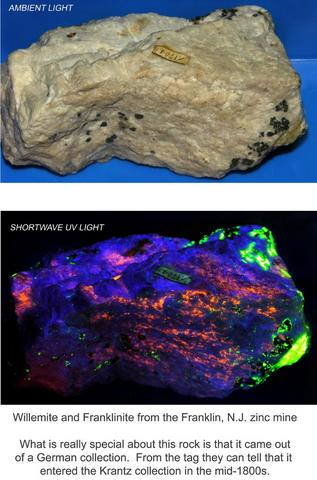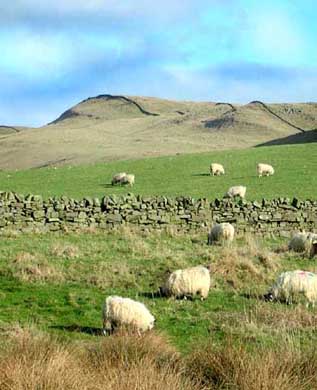Film vs. Digital
I have been reading several books by Galen Rowell recently, and this reminds me that back in the bad old days lots of people (including me) took slides. Photographers who hoped to have their pictures published in magazines or in books often shot larger sized transparencies such as medium format. I shot many slides when I was out in the wilderness backpacking, and I would occasionally give a slide show presentation to our local Sierra Club group.
In this age of really nice digital cameras which are just now beginning to approach 35mm film in terms of resolution and depth of color, we have gotten a little spoiled. And it is wonderful.
Imagine that you could not crop. Not at all. In a slide you sometimes would capture on film that annoying power line which the viewfinder said was just outside of the picture. You could not use cropping as a form of enlargement either. The zoom lenses back then by and large were even worse quality than what we have available to us now. So the people who shot transparencies typically had to bring along various prime lenses, from wide angle to telephoto.
The exposure and richness of color you got depended upon the camera’s exposure settings, the lighting, and the type of film you chose. You got what you got, and that was that. So back then people tended to bring along various filters so that they would get the type of colors they were going for. And they did a fair amount of bracketing just to make sure that they got the proper exposure.
If you found that your camera was loaded with ISO 25 or 64 film, and out-of-the-blue you suddenly needed to shoot in a low light situation, you were screwed. So some photographers walked around with multiple cameras hanging off them containing films with different light sensitivities. Now your digital camera automatically changes to a higher light sensitivity setting when needed, without you even knowing it. Yes, some of us still shoot with f/1.8 or f/2.8 lenses occasionally, but our cameras are also helping out by changing to an ISO of 3200 or even ISO 6400 whenever it is needed.
For much of my career as an amateur photographer one had to manually focus the lens. Virtually all new lenses now focus automatically. This is a tremendous improvement; especially if you are using a large aperture or are shooting up really close (macro). In both situations the range of proper focus (depth of field) can get razor thin.
Longer lenses (i.e. telephoto lenses) are especially sensitive to minute shaking of the camera. So back in the film days it was not practical to shoot with a 350 mm lens unless the camera was mounted on a sturdy tripod. Now we have Vibration Reduction (VR) available to us, which helps noticeably. I routinely hand shoot with lenses of this length.
Nowadays any of us can easily crop out an annoying power line which is right on the edge of the picture. We can make the colors much richer and more vivid if we wish, adjust the brightness and contrast, and we can bring out the detail in very, very dark areas. If the color temperature of the lighting isn’t quite right we can easily adjust this. There is no requirement that we make a choice up front whether we want to shoot in black and white or color. We can easily de-saturate a color shot afterwards changing it to B&W. And we can do all of this with computer software which is often free or costs less than $100-.
Yes, film still is somewhat better if you intend to enlarge the picture to poster sized or larger. But even at a fairly large enlargement like 20” X 30” (51 cm X 76 cm) most decent digital cameras do just fine. I have printed a couple of very nice and extremely high detail 20x30s from my 6 megapixel Nikon D40.
With film there is a significant wait between taking the picture and seeing the result. On all decent DSLRs you can see your results immediately, even looking at the curves to determine if your exposure is correct if you wish. Film and processing gets a little expensive if like most photographers you normally need to take 50 - 150 pictures in order to get one truly outstanding photo. With digital it costs nothing. You just press or click delete, or even re-format the memory card. I have called this “quality through quantity” for more than 50 years now, even back during the film emulsion and chemicals era.
-
-
-
-
-
-
--
-
-
-
-
In this age of really nice digital cameras which are just now beginning to approach 35mm film in terms of resolution and depth of color, we have gotten a little spoiled. And it is wonderful.
Imagine that you could not crop. Not at all. In a slide you sometimes would capture on film that annoying power line which the viewfinder said was just outside of the picture. You could not use cropping as a form of enlargement either. The zoom lenses back then by and large were even worse quality than what we have available to us now. So the people who shot transparencies typically had to bring along various prime lenses, from wide angle to telephoto.

The exposure and richness of color you got depended upon the camera’s exposure settings, the lighting, and the type of film you chose. You got what you got, and that was that. So back then people tended to bring along various filters so that they would get the type of colors they were going for. And they did a fair amount of bracketing just to make sure that they got the proper exposure.
If you found that your camera was loaded with ISO 25 or 64 film, and out-of-the-blue you suddenly needed to shoot in a low light situation, you were screwed. So some photographers walked around with multiple cameras hanging off them containing films with different light sensitivities. Now your digital camera automatically changes to a higher light sensitivity setting when needed, without you even knowing it. Yes, some of us still shoot with f/1.8 or f/2.8 lenses occasionally, but our cameras are also helping out by changing to an ISO of 3200 or even ISO 6400 whenever it is needed.
For much of my career as an amateur photographer one had to manually focus the lens. Virtually all new lenses now focus automatically. This is a tremendous improvement; especially if you are using a large aperture or are shooting up really close (macro). In both situations the range of proper focus (depth of field) can get razor thin.
Longer lenses (i.e. telephoto lenses) are especially sensitive to minute shaking of the camera. So back in the film days it was not practical to shoot with a 350 mm lens unless the camera was mounted on a sturdy tripod. Now we have Vibration Reduction (VR) available to us, which helps noticeably. I routinely hand shoot with lenses of this length.
Nowadays any of us can easily crop out an annoying power line which is right on the edge of the picture. We can make the colors much richer and more vivid if we wish, adjust the brightness and contrast, and we can bring out the detail in very, very dark areas. If the color temperature of the lighting isn’t quite right we can easily adjust this. There is no requirement that we make a choice up front whether we want to shoot in black and white or color. We can easily de-saturate a color shot afterwards changing it to B&W. And we can do all of this with computer software which is often free or costs less than $100-.
Yes, film still is somewhat better if you intend to enlarge the picture to poster sized or larger. But even at a fairly large enlargement like 20” X 30” (51 cm X 76 cm) most decent digital cameras do just fine. I have printed a couple of very nice and extremely high detail 20x30s from my 6 megapixel Nikon D40.
With film there is a significant wait between taking the picture and seeing the result. On all decent DSLRs you can see your results immediately, even looking at the curves to determine if your exposure is correct if you wish. Film and processing gets a little expensive if like most photographers you normally need to take 50 - 150 pictures in order to get one truly outstanding photo. With digital it costs nothing. You just press or click delete, or even re-format the memory card. I have called this “quality through quantity” for more than 50 years now, even back during the film emulsion and chemicals era.
-
-
-
-
-
-
--
-
-
-
-


























